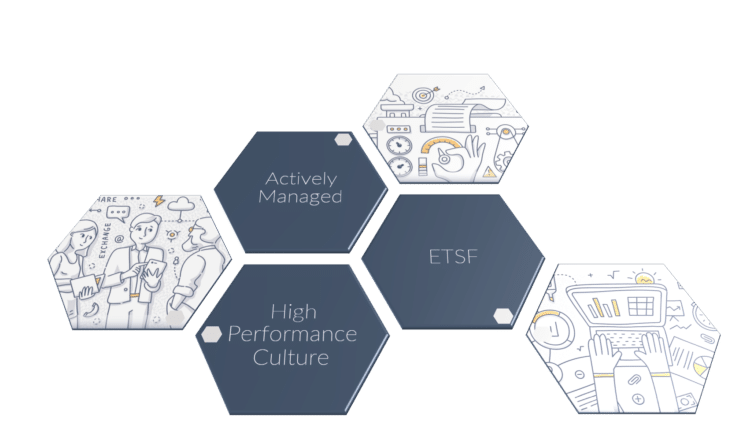Originally posted on SOPSA.org
As the function of Sales Operations evolves within organizations, we are faced with several large challenges.
- How do we set priorities with all the competing initiatives coming our way?
- How do we help the sales organization absorb the changes to process, policy and systems which we implement?
- How can we participate with the rest of the commercial leadership team in building a road map for moving the organization forward?
If we are not careful, our function can quickly resemble that one junk drawer we all have in our kitchen. You know that drawer right? Or, am I the only one with a junk drawer? In mine, there are those things that I use often, which migrate to the front of the drawer, and those that I no longer use because I am not making the same dishes in our kitchen. There are those single-purpose tools that I can’t find a common home for in any other drawer, so I just throw them in a convenient place.
For Sales Ops, it is helpful to have a handful of guiding principles, which can be in place from year to year and do not change based on the size of the company, the go-to-market strategy or who we have on our team. Principles are NOT outcomes like productivity or hitting revenue targets. The Oxford dictionary defines “principles” this way: a fundamental truth or proposition that serves as the foundation for a system of belief or behavior or for a chain of reasoning.
Having a set of fundamental beliefs that guide why we do what we do and how we go about doing them is critical to driving the clarity of our function. They help individuals on our teams make choices in the moment, which aligns with a true north that we all agree to. In this way, we can move much faster than if we are totally reactive to the needs of the moment.
In this post, I would like to propose three fundamental beliefs or principles which I feel are critical to guiding Sales Operations toward success. The diagram below shows those three principles. What follows is an elaboration on each.

Actively Managed (AM)
Inevitably, when Sales Operations is founded in a company, it is because a commercial leader feels the need to have greater visibility into his or her business. Once that is established, efforts quickly turn to driving more productivity from the sales team. We put in place common practices for opportunity management, forecasting and, over time, a more defined system of sales management. All these items increase the maturity of our processes and allow our commercial teams to execute at ever-increasing levels. Sales Operations needs to have a strong focus on helping the commercial organization continually grow in the ability to execute. Being actively managed(managed on purpose)with a goal toward constant improvement is the first key principle for Sales Operations.
Easy to Sell For (ETSF)
We must strive to make our companies Easy to Sell For (ETSF). This second principle may seem contradictory to the first, but in actuality, it is the perfect complement to Actively Managed. Let’s look at it this way. We can be so extremely focused on being AM that we cross the line and become a terrible place for our sales teams to work. When Sales Operations is labeled as “Sales Prevention”, it is clear that the function has crossed the line and is no longer fulfilling the full vision for what it can be.
Just as we put effort into the customer journey in order to make our company easy to do business with, we must put equal effort into becoming ETSF. Why?
Because the high performing salespeople we want to retain have their own view of “sales productivity”. Their personal productivity equation is based on the effort it takes to produce the sales which they are compensated for. If we make their job so difficult that they can not use their time effectively for the core purpose—to source, nurture and close business with prospects—they will leave. On their way out, they will not perform at their maximum capability and then we will have a tremendous gap between their departure and the productive months of their replacement.
When we deliver improvements to processes, policies, systems, and communications that make our company the best place in the world to sell for, we will attract and retain quality people. Those people will be able to operate “in the zone” when they do their job. The result is an increase in productivity, which will be much more sustainable than one driven by ever-increasing levels of management overhead.

I tend to see these first two principles as conforming to the concept of Yin and Yang. Where ETSF is the Yin or positive attributes and AM is the Yang or potentially negative attributes of an organization. In healthy organizations, there is structure even in the ETSF side and there is an awareness of our need to serve the lives of the sales team in the AM portion.
When these first two principles are out of balance, organizations and the people in them suffer.
High-Performance Culture
The third and final principle is the unique quality of an organization that acts as a catalyst for the other two. When this third principle is added to an environment where the first two are present, it helps keep the balance. This principle says that we value a High-Performance Culture (HPC). An HPC is a culture that produces consistently higher results than that of our competitors.
In short, we need to remember that our salespeople are not some alternate form of human.
They have the same motivating factors for safety, clarity, and provision that every other person in our organization has. They are just more comfortable than others in their willingness to accept personal responsibility for the outcomes they produce—and to live on the direct fruits of their labor.
When we begin to build organizations and programs, which produce High-Performance People who happen to sell,we know we are building something that will last and endure the stresses of the constant change we encounter.
Studies consistently show that 70% of a sales team’s success is related to their MINDSET. The skills of the sales team account for 20% of success and the tools used make up the remaining 10%. Why is it that we focus so much on the 30% and miss out on the impact culture can make? Let’s take the answer to that question into the comments on this blog. Future articles will dive deeper into building an HPC.
If you have hung with me this far into the post…Thank You. It is likely that you have experienced first hand the challenges of being a seller who provides for your family with the fruits of your labor, or that you are a thoughtful, caring individual in Sales Operations leadership who truly knows there has to be some better way of solving the productivity puzzle.
Next Actions
What can you do today to begin to operate by these principles?
- Make a list of all your current projects and initiatives
- Go to a whiteboard and draw a column for each of the principles
- Plot which principles are behind each initiative
- Stand back and take a look. Is there an over-emphasis in one area that is pulling you out of balance?
Take steps to bring things back into balance by
- Stopping Actively Managed items which are not core
- Starting ETSF initiatives to balance the AM initiatives
- Consider delivering ETSF projects ahead of AM projects to gain trust and respect from your sales teams
- Consider your messaging being used in the roll-out of new projects. Does it acknowledge these three principles?
Finally, plan your talk for the coming sales kickoff meeting. Consider structuring it around how Sales Ops recognizes these three principles and how your initiatives are all driven by them. The outcome of that talk should be a resounding agreement that, “He gets it!…that’s right!”. Once you have the trust of the sales team…deliver! And then watch the growth that happens.



